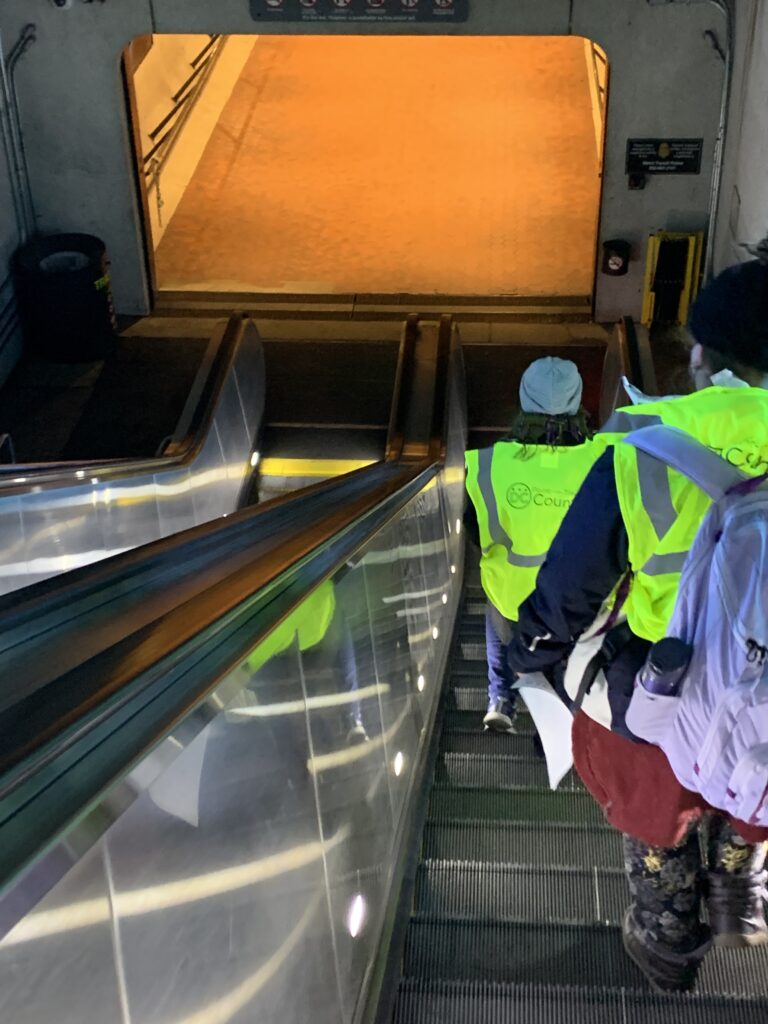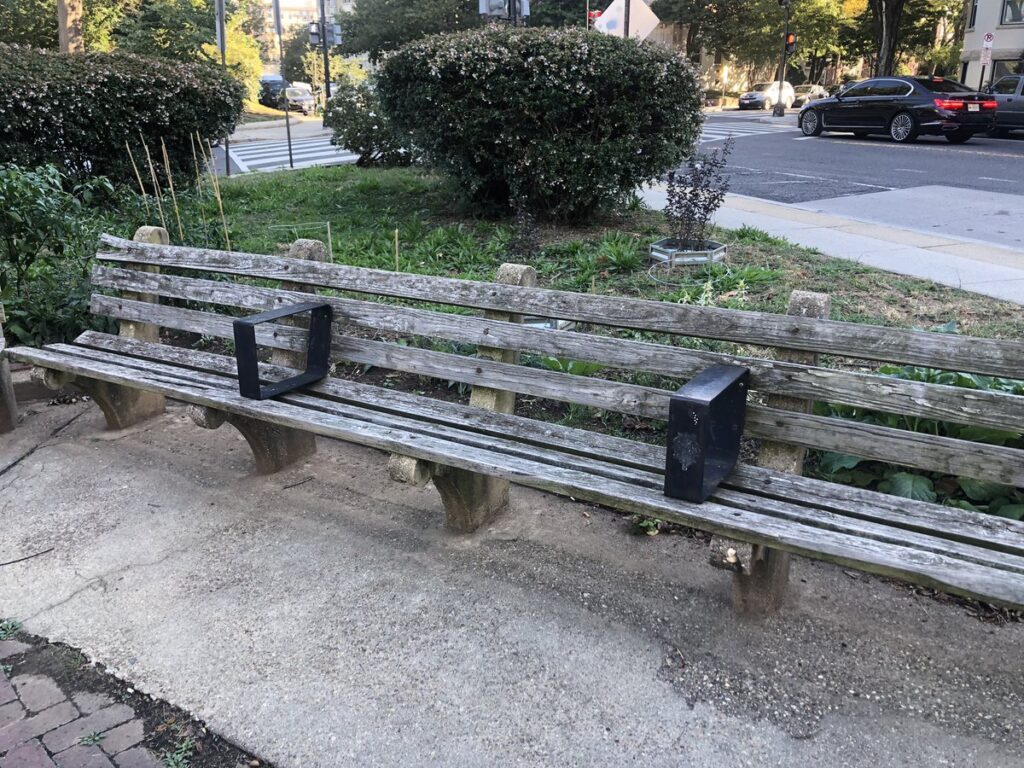Around 9:30 p.m. on Jan. 26, a group of 12 volunteers stood on a street corner just a block or two away from the Martin Luther King Jr. Library. They listened attentively to instructions from their team lead, Maria Le.
The group was participating in this year’s point-in-time count (PIT), which is an annual survey of the number of sheltered and unsheltered individuals experiencing homelessness in the District. Conducted by outreach workers and volunteers on a single night every year, the PIT Count is a nationwide count required by the U.S. Department of Housing and Urban Development (HUD) for all communities receiving federal homelessness assistance funds.
Le works for Pathways to Housing DC, a nonprofit that participates in the District’s PIT Count every year and also helps to coordinate, recruit and train volunteers. Le has participated in the District’s PIT Count for the last three years. Before that, she assisted with the count in a shelter in Maryland. As a team lead in this year’s count, Le was in charge of coordinating and guiding her group of 12 volunteers as they canvassed their assigned area of the city.
After a briefing from Le, the volunteers paired up and headed out in orthogonal directions to begin canvassing their assigned zones of the city, leaving Le alone with her own partner for the count. Angela, who declined to give her last name, is a regular volunteer with Pathways to Housing and a contract attorney by trade who does pro bono legal work for homeless clients in her spare time. Together, she and Le methodically searched through Metro stations, loading docks, alleyways and storefronts for unsheltered individuals.
Participating communities are instructed by HUD to perform the PIT Count during the last 10 days of January, one of the coldest months of the year, to ensure sufficient time for compiling and reporting data to HUD, as well as to maximize the accuracy of the count.
“Because it is easier to count people in shelter than on the street, conducting the count on a night when the shelters are most full will lead to the most accurate count,” says HUD in its PIT Count methodology guide.
On the eve of this year’s count, there were fewer volunteers than in previous years, according to Christy Respress, the executive director of Pathways to Housing DC.
“I’m thinking that probably has to do with COVID, with people’s comfort level, ” she said.
An essential part of the PIT Count is the survey that unhoused individuals are asked by volunteers to complete. In this year’s count, volunteers used a mobile app to conduct the survey and record participants’ answers. In addition to basic demographic questions such as age, gender and race, survey participants were also asked questions that covered an array of sensitive topics, including sexual orientation, history of substance use, and experience with domestic violence.
Respress said it’s not easy to gather this kind of information.
“It’s hard to have very intimate conversations with people when you’re keeping social distance, and you have masks on, and it’s hard to hear,” she said. “We want to be really respectful of people’s privacy, so when you’re distanced, you don’t want to be shouting or raising your voice—you want to keep that information personal.”
On Feb. 4, HUD released the first part of its Annual Homeless Assessment Report, which summarizes key findings from the 2021 PIT Count. The report announced that the number of people experiencing sheltered homelessness in the District of Columbia on a single night in 2021 had decreased by 22.6 % from 2020, a larger figure than the nationwide decrease of 8%.
However, HUD advised that the report’s findings do not reveal the full picture.
“Estimates of the number of people experiencing sheltered homelessness at a point in time in 2021 should be viewed with caution, as the number could be artificially depressed compared with non-pandemic times, reflecting reduced occupancy in some communities or safety concerns regarding staying in shelters,” according to a press release.
Notable gaps in the reported data can be traced to pandemic-related challenges, HUD said.
Due to concerns regarding the risk of COVID-19 transmission during unsheltered PIT Counts, many communities, including San Francisco and Los Angeles, did not perform counts of unsheltered homeless populations in 2021, with only 39% of participating communities in the 2021 PIT Count electing to perform an unsheltered count, according to part one of HUD’s 2021 Annual Homeless Assessment Report. Thus, the report does not account for a significant portion of the homeless population—those experiencing unsheltered homelessness.
But the PIT Count is not without its limitations even in a non-pandemic setting.
Le is well aware of the PIT Count’s shortcomings as a tool for carrying out an in-depth examination of homelessness in the District.
“There are things about the count that don’t give the greatest picture of homelessness in a given jurisdiction,” Le said.
Cold weather, for instance, can lead to a systematic undercount.
“People are more likely to find housing that they wouldn’t otherwise in order to stay out of freezing temperatures. People will stay in less safe family environments, because it’s January,” Le said.
But, Le said, the limitations of the count have less to do with its methodology, and more to do with the nature of the problem that it is trying to understand.
“Homelessness is not something that’s easily just captured in a one-night count. So, while there are things that are not perfect about the count, I don’t know how much could be done to improve it. The nature of trying to get a snapshot of something that’s so complex can be really difficult,” Le said.
The PIT Count is, by design, only a snapshot of the scope and scale of homelessness within a certain geographic area. But its importance cannot be overstated, said Respress.
The data obtained from the PIT Count every year is used to measure progress at the federal, state and local level in preventing and eradicating homelessness. It also helps policymakers determine how best to allocate resources and funding for addressing homelessness; assists communities in planning their homelessness assistance services and programs; and provides crucial information on the number and characteristics of the homeless population within a certain jurisdiction.
“It’s not a perfect tool by any means. But it’s consistent. And I think having a consistent count every year is really key,” said Respress.
The PIT Count is also the only available measure to date of the number of people experiencing unsheltered homelessness.
“It’s what we have, and it’s what helps us out right now,” said Le. “So it’s definitely still worth doing.”
But beyond the numbers, there’s another layer of importance to the PIT Count, Respress said.
“The most important reason we do this is to hold ourselves accountable. We have really clear goals in D.C.’s strategic plan to end homelessness, Homeward DC,” said Respress, referring to the strategic plan to end long-term homelessness launched by Mayor Bowser in 2015.
“We’ve got to use the data (from the PIT Count) year over year to hold ourselves accountable to meeting those goals,” she said.








